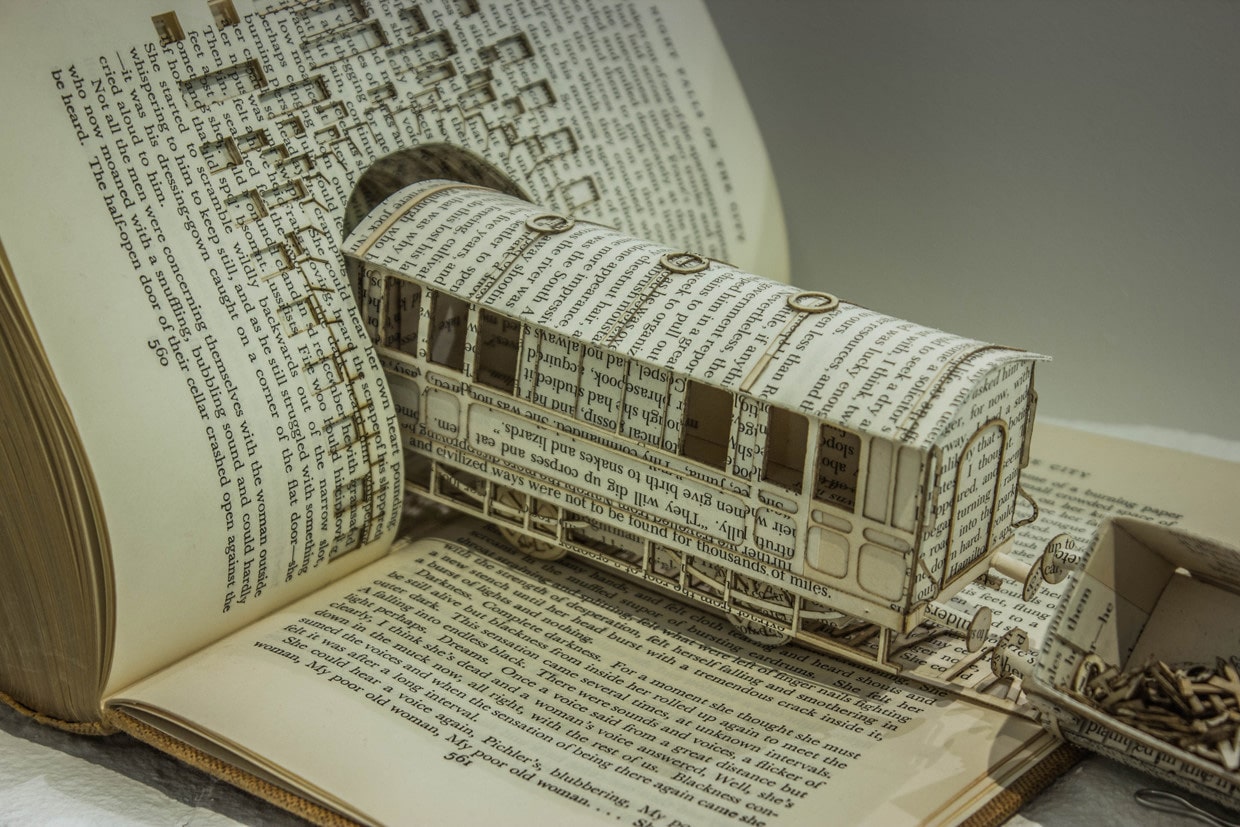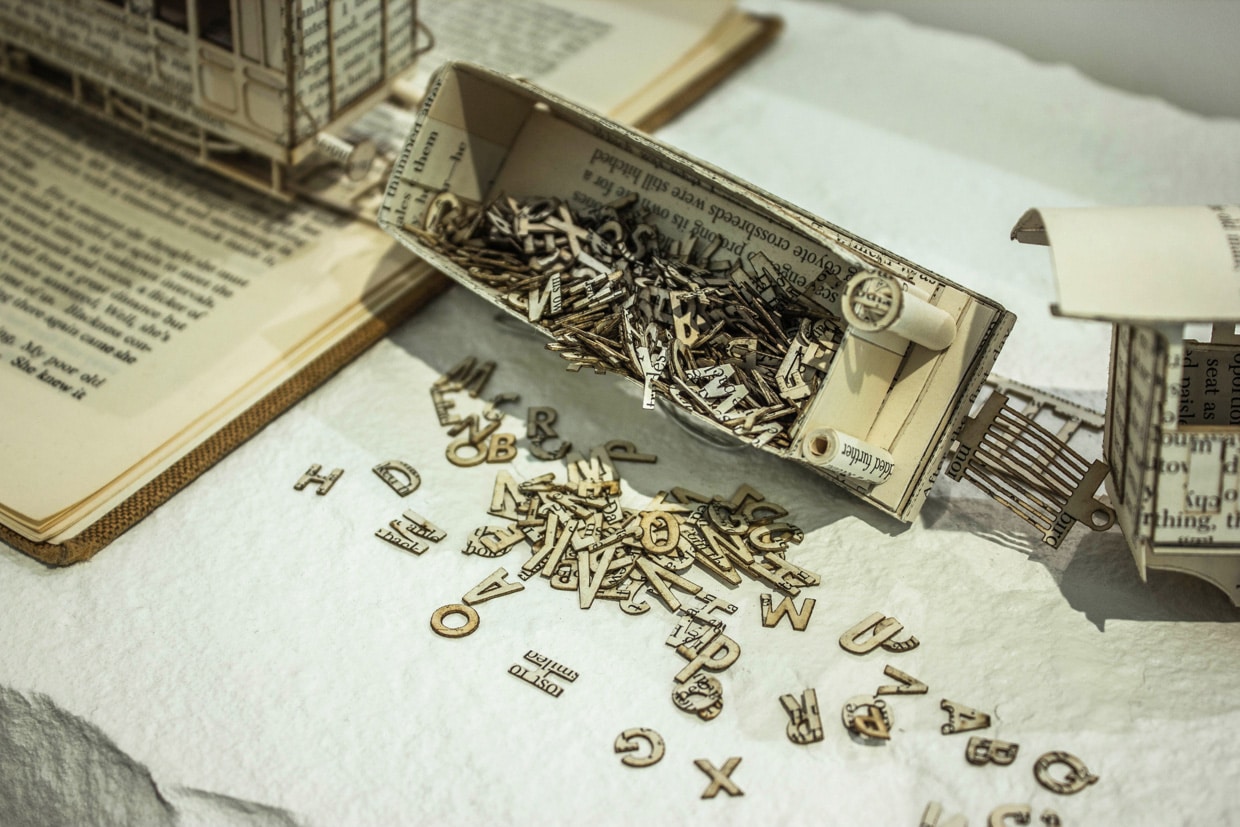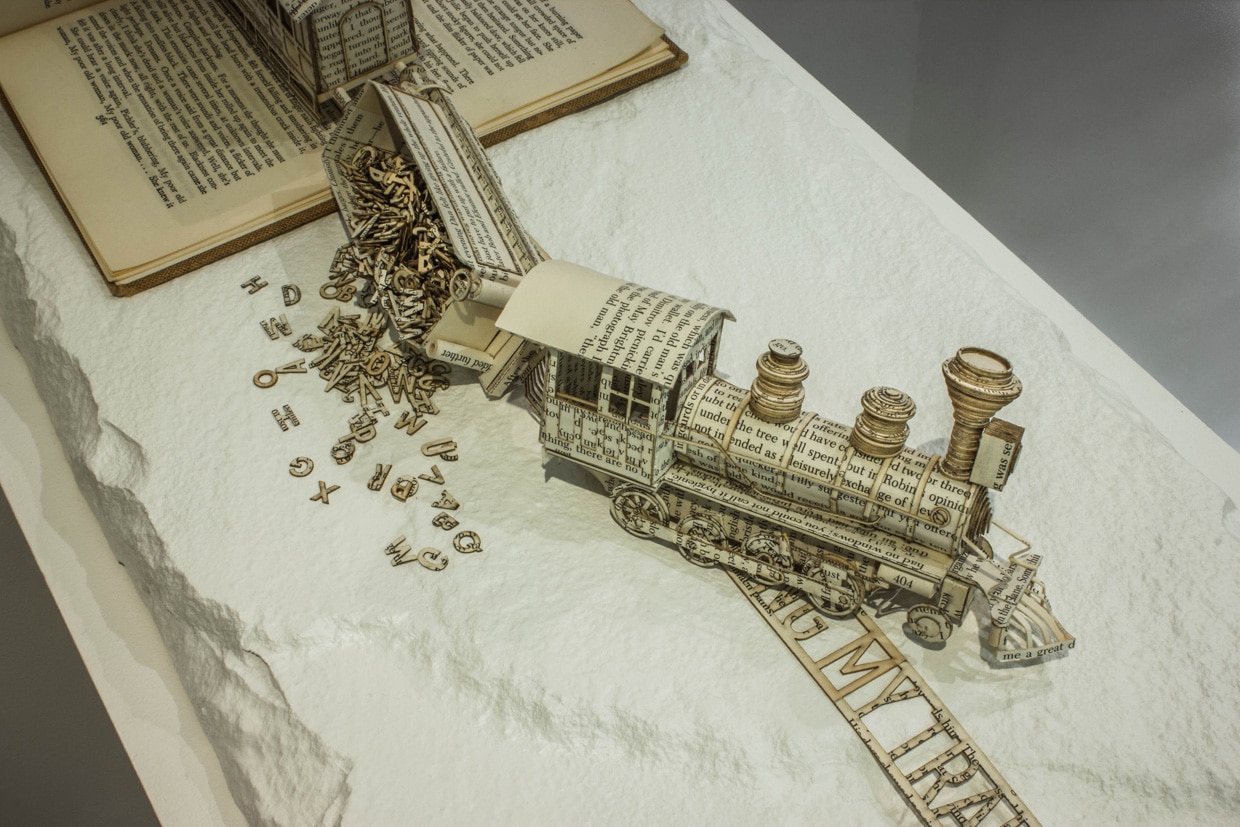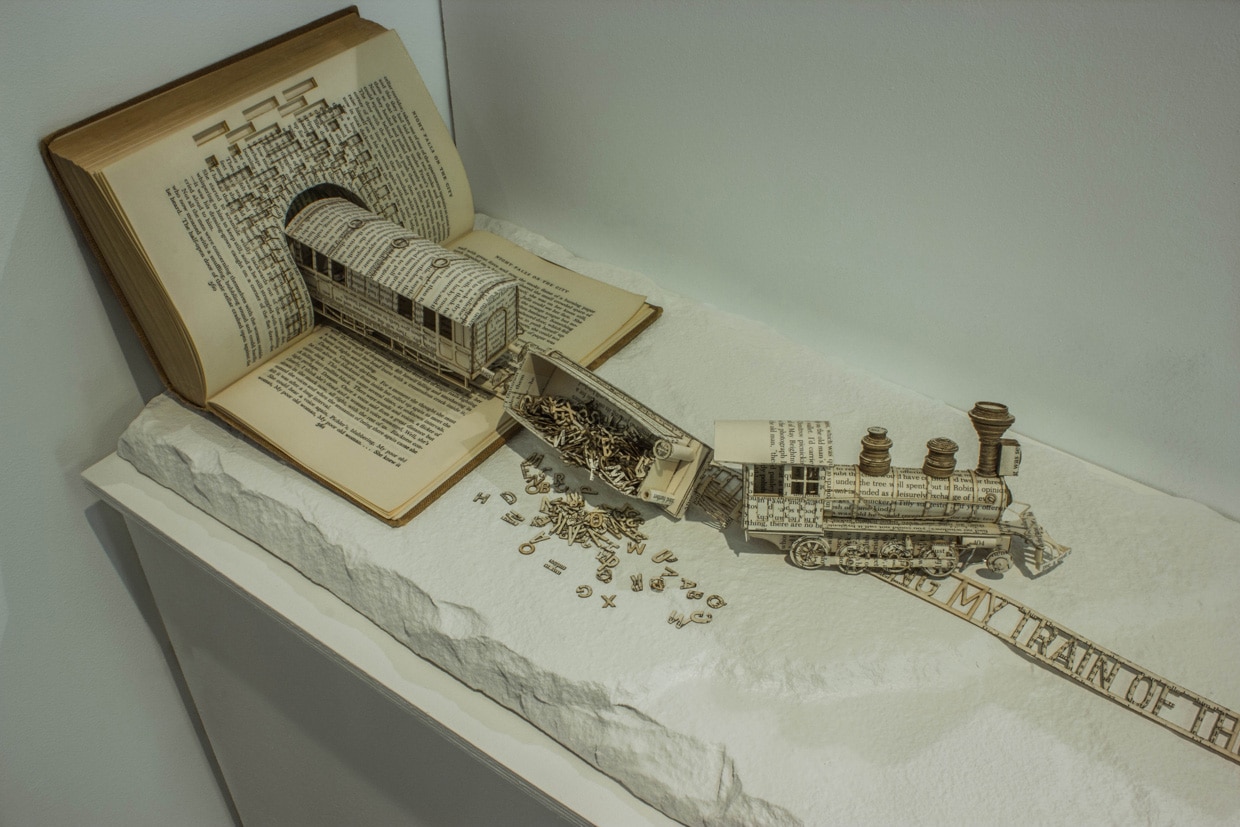It’s been so inspiring over the past several years to see how creative artists turn traditional books into works of art. Sometimes they use thousands of books to make gigantic sculptures, and sometimes it’s more subtle. This particular book sculpture caught my eye because of the typography and detail that went into this extraordinary train design. It’s almost hard to believe that all this came out of a book. It makes you realize how versatile books are, and how nice it is to give them a second use.
This train book sculpture was created by Thomas Wightman. Aside from breathing new life into this old book, it illustrates the effects of OCD on a person’s life. It uses the metaphor of a derailing train to show what it’s like. According to Behance, “The expression was ‘derailing my train of thought’ because this person felt that the rituals they had to perform were disrupting their day. The compulsions and worry would sidetrack them from doing everyday activities.”
The coal cart part of the train is tipped over (and the mixed up typography spilled out), which represents the mixed up emotions of anxiety and panic that a person might feel. Thomas is studying graphic design at Edinburgh Napier University. This project was part of his studies. He created two other book sculptures in addition to this one in his series.
One of my favorite things about this sculpture is that the book has to remain open in order for it to be complete. So many times we see artists create a book sculpture which starts with the cover, but Thomas typically starts from the inside and works from there. It makes the book seem more alive, and the words in the book are move involved in the process. Brilliant!
Book Sculpture Illustrates OCD With A Derailed Typography Train
(Click Images To Enlarge)
Via: [Ian Brooks]






COMMENTS